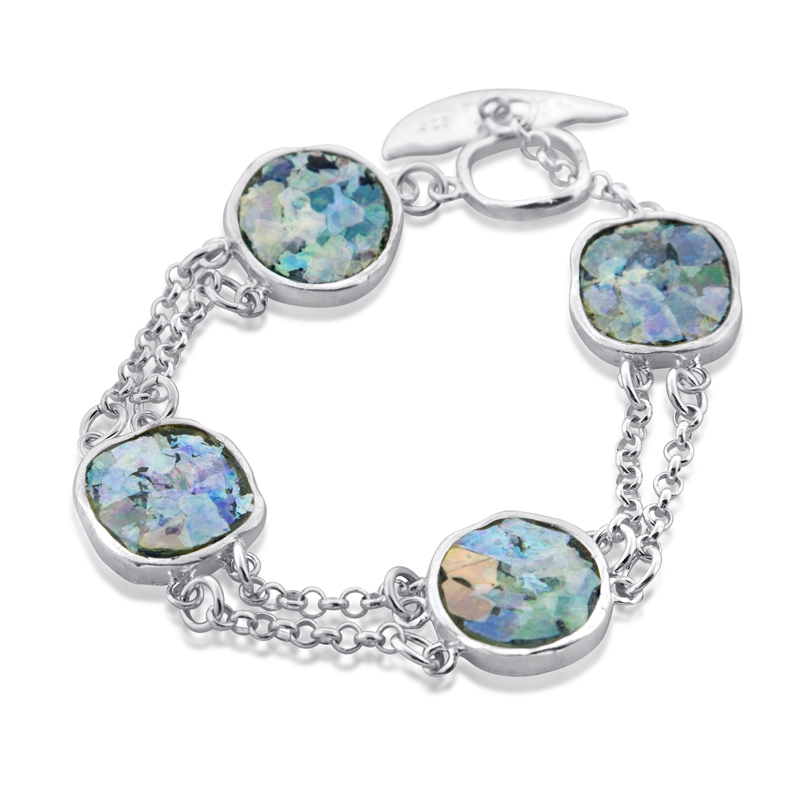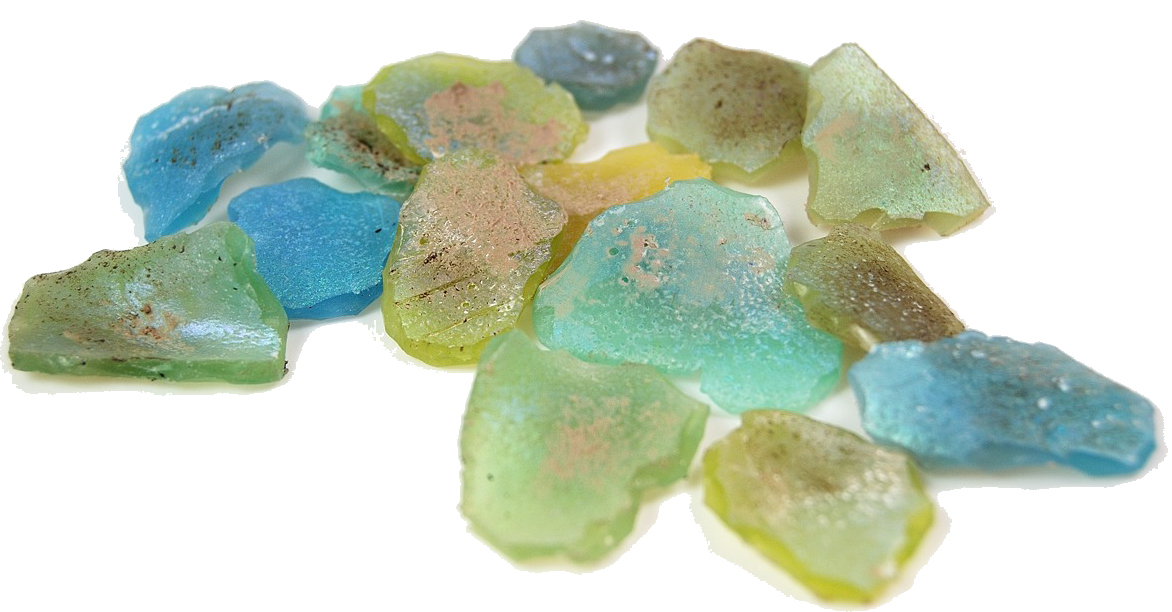Roman Glass Jewellery - Melbourne Australia 

Roman Glass - History
Under the reign of the first Roman Emperor Augustus (1st century BC) glass-making became an important industry in the Roman Empire. Glass bottles were popular and affordable, consequently used for oil, perfume, kohl and a whole range of other cosmetics, medicines and ointments. It was an art, now lost, created by skilled craftsmen. This beautiful glass was made by using sand, alkali, sodium carbonate, colouring agents (metals) and formed with burning seaweed and lime and was produced in a large range of colours, patterns and frequently complex techniques.
 It is believed that metals were often used to affect the colour of the glass - copper to make turquoise to light blue, green, red or opaque red coloured glass. Cobalt made the glass dark blue. Yellowish and purple glass was created by the use of manganese and antimony to make the glass opaque yellow or opaque white. Also iron was used to make a light blue, green, brown and black shades.
It is believed that metals were often used to affect the colour of the glass - copper to make turquoise to light blue, green, red or opaque red coloured glass. Cobalt made the glass dark blue. Yellowish and purple glass was created by the use of manganese and antimony to make the glass opaque yellow or opaque white. Also iron was used to make a light blue, green, brown and black shades.
The pioneering of new glass-blowing techniques brought about a revolutionary change in the lives of common people, and the use of everyday household items such as plates, bowls and jars was no longer the privilege only of the wealthy.
[ Click here to check our collection of Roman Glass Silver Jewellery ]
The Story of Roman Glass Jewellery
At the peak of the Roman Empire's power, nearly 2000 years ago, Rome controlled the entire Mediterranean Sea area. The Roman Empire is credited with building a great civilization renowned for its artistic and technological achievements and the industrialization of glass production is considered one of its most significant technological accomplishments.
The glass is mostly excavated in Israel, in archaeological sites dating back to the period of the Romans. During this time, Israel became a major glass-making center. It was an industrial revolution and glass, once a rarity found only in the homes of royalty and the very wealthy, became commonly used.
[ Click here to check our collection of Handmade Israeli Jewellery including Roman Glass ]
Supply of Roman Glass is limited!
The supply is not infinite and the glass cannot be duplicated artificially. Israel is one of the few locations in the world where a series of geological and climatic phenomena coupled with 2000 years of contact with the mineral-rich, damp soil enabled the formation and preservation of the strikingly colourful patina.
[ Click here to check our collection of Sterling Silver Jewellery ]
Why does each piece have unique colours?
The glass has been exposed to oxide-rich damp soil for almost 2000 years which results in the formation of the colourful outer layer called Patina. Colours vary depending on the minerals and the conditions that the glass was exposed to. Every piece of glass is unique.
[ Check our collection of Handmade Jewellery featuring Roman Glass ]
Why is each piece shaped differently?
Each piece of Sky Collections Roman Glass Jewellery contains fragments of broken glass. These fragments were originally part of a plate, vase, jar or other glass object used in the 2nd to 4th century AD. Each object was hand blown. This accounts for the varying shapes and colours of the glass fragments.
[ Buy Handmade Roman Glass Silver Jewellery online ]
How do I take care of my Sky Collections Roman Glass Jewellery?
Treat your special piece of Roman Glass Jewellery as you would any other piece of fine jewellery. A little rain wouldn't hurt but bathing or swimming with the jewellery is not recommended as it may affect the delicate patina.
To explore our entire range of hand crafted Silver Roman Glass Jewellery please click here.

